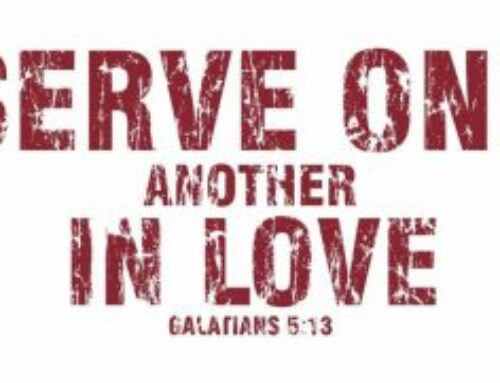i am busy reading this book, that my friend Steve Graybill sent to me while we were in Americaland [after i asked for one of the books he had recently read that was worth reading] and it has been such an interesting read. Steve was the one who recommended ‘The Lemon Tree’ and ‘Blood Brothers’ which i gave a glimpse of over here, as i was trying to understand the Palestinian/Israeli crisis a little bit better. This is more of a theological/discussion book whereas the other two were stories and so a little easier to connect with in some ways. But there has been some very interesting thinking generated by this book – i’m not sure i agree with everything Naim Stifan Ateek says, but some very challenging ideas for sure [the proposal that Samson was the first ‘suicide bomber’ for example, really stopped me in my tracks, because…]
But without doubt the section of the book i really enjoyed and found interesting was this passage from a chapter entitled ‘Son of David or Suffering Servant’ which looks at four groups of people and how they responded to the Roman occupation at the time Jesus lived and how He chose a path different to all of them. It is a bit of a lengthy post but it is SO good, so make some time and dive in… The following section is from the book:
= = = = = = = = = = = = = = =
“BIBLICAL CONTEXT
In the first century Jesus was born under the Roman occupation of His home country of Palestine. In fact, He lived all His life under the Empire and was killed in the end by the occupying forces. As a young man, Jesus, as well as many others in His generation, was attracted by different movements and groups within His society. Each had a basic philosophy about life and God, and each movement had its advocates and proponents as well as its adversaries and opponents.
For many centuries people in Palestine lived their entire lives under the Roman Empire. It was not a benevolent occupation. Any occupation is by nature oppressive because it refuses to grant people freedom and liberation. To a large extent, the options and choices that Jesus faced are still present in our different societies. While other comparisons are equally valid, our focus here compares the groups of Jesus’ time with their counterparts in Palestine today.
These groups arise from our basic nature as human beings and our propensity to relate to people of power, especially in situations where people live under foreign occupation. This was as true for the people of Jesus’ time who lived under Roman occupation as it is for Palestinians today who live under Israeli occupation.
The Zealots
Without doubt, the group most attractive to many young people in Jesus’ day was the Zealots. They were the revolutionaries who believed that the only way to relate to the occupation of their country by the Romans was through armed struggle. The model of violent struggle was not foreign to them; there was a strong tradition for such action. The most recent paradigm was that of the Maccabees who had risen up against the Greek occupation of their country and won their independence. In Jesus’ time, in their struggle against the Romans who had usurped control of their country, the Zealots used the tools of revolutionary violence, countering violence with violence. They believed that their god would fight for them in their righteous struggle.
There were some more extreme factions within the Zealot movement. The Sicarii not only killed their Roman enemies but were ready to assassinate any fellow Jews suspected of collaboration with the Romans. And all of this was done in the name of God.
Scholars tell us it is likely that a number of the disciples of Jesus were Zealot revolutionaries. They saw in Him a leader who could command a great following and contribute to the liberation of the country. There are references in the Gospels that indicate such a temptation. John 6.15 offers an example: “When Jesus realised that they were about to come and take Him by force to make Him king, He withdrew again to the mountain by Himself.” Yet Jesus constantly rejected such temptations throughout His ministry, from the temptations of the devil’s offer of the kingdoms of the world (Matt. 4:8-10; Luke 4.5-8) to the cries of the crowd to make Jesus king when He entered Jerusalem near the end of His life (John 12.12-19). The political language of these passages indicates that Jesus could have seized several opportunities to incite a mass insurrection against the Romans, which surely would have involved armed resistance.
The temptation to join the Zealots would have been very real because they shared many of the same goals as Jesus and His disciples. Jesus shared their concern for the poor, and their passion for justice. They were both very committed to the cause, even to the point of death. Roman suspicion that Jesus was a Zealot certainly played a major role in His death.
Today in Palestine the equivalent to the Zealots are groups like Hamas and Al-jihad Al-islami. They believe in revolutionary violence as the means to counteract Israeli state violence and force the Israeli army to end its occupation. They, too, are disciplined and committed to the cause of justice for their fellow Palestinians and have been very compassionate toward the poor and needy in their communities.
The Essenes
This group, disenchanted with the religious system of Jerusalem, left their towns and villages and withdrew into the desert. In the desert, they established communities, busied themselves in copying different texts of the Old Testament scriptures, and developed rules for the daily life of their communities. They avoided involvement with what went on outside.
The Essenes represented an escape from the reality of life, an escape that is still attractive to many people today. This option was open to Jesus: “He could have withdrawn from the tensions and conflicts of the urban center where government and commerce constantly polluted even the most well-intentioned sons and daughters of the law; He could have sought out a place where He could be pure and perfectly faithful.” Such an approach of escape or isolation can take various forms. People do not have to be enclosed within a monastery to live this way, although some do. Some people emigrate from the area of conflict, leaving everything behind. Others escape by totally withdrawing even within their community, living in isolation from the daily affairs of life.
The Herodians and Sadducees
These were the pragmatists and realists. The Herodians supported King Herod, believing it better to give allegiance to the king who was closer to kin than the alien Romans. The wealthy and conservative Sadducees controlled the temple in Jerusalem and benefitted immensely from it.They stayed on good terms with the people of power to expedite and facilitate daily solutions to contentious problems. They accepted the political situation in Palestine and to a larger extent collaborated with it. They believed that since they could not change the occupation of their country, they might as well not only with it but make the best of it. They made sure that worship in the temple was conducted properly and that nothing should disturb it.
In the conflict over Palestine, many Palestinians have arrived at such realism, accepting the Israeli occupation of their country. In order to advance their business activities or for reasons of prestige, they have allowed themselves to get close to the power and cooperated with the occupation. In some cases their pragmatism has taken on a more sinister aspect, becoming blatant collaboration.
The Pharisees
These were religious fanatics who adhered to the letter of the law. Although the word “pharisee” means separatist, they lived among the people in the village and urban centers of the land, yet separated themselves from anything that in their opinion would defile them. They prided themselves in keeping the purity of the law in meticulous detail as regards eating and drinking, keeping the Sabbath, and many other aspects of daily life. Jesus criticised them for payiing attention to the minute details of the law yet forgetting the more important issues of life such as justice, faith, and mercy (see Matt.23).
The Pharisees comprise a sizable segment of our communities; regardless of the political environment, they continue to practice the rituals and ceremonies of their religion while ignoring the “weightier matters” of justice and love (Matt. 23.23; Luke 11.42). Many cling to the observance of the laws and regulations of religion because they have defined religion in terms of strict adherence to the teachings of the church, mosque, or synagogue regarding worship, fasting, feast days, and so on.
THE NEW WAY OF JESUS
These four options that confronted Jesus confront us today.People are attracted to one or another of them. Many societies offer similar options or philosophies of life that appeal to our human nature. We are always challenged by the “righteous” violence of revolutions, or by escapism and isolationism, or by pragmatism and realism, or by established and popular religion. Each has its attraction, and Jesus must have realised that.
But Jesus chose another way, a way that draws on the best that these paradigms can offer and yet takes religion and faith to a deeper dimension. This is the way of faithfulness to God. Jesus rejected the way of violent revolution and refused to walk the way of collaboration. He would not accept the option to escape life and be uninvolved, and He saw the pitfalls of superficial religiosity where observance and rituals replace morality and authentic relationship with God.
What is the way of Jesus? It is the way of allegiance to God’s kingdom. The way of Jesus is (1) to stand for justice and truth without picking up the sword – that is, to resist evil without using evil methods; (2) to rise above the ways of the world without abandoning involvement and commitment to the poor and oppressed; (3) to seek the humanity of the oppressor without losing integrity by appeasement or collaboration; and (4) to love and worship God without adhering to a strict and closed religion.
Jesus presented God as a loving father/mother who loves and cares for all people equally, a God who is just and merciful. He called into being a distinct community whose basic rule of life is love: the love of God, God’s unconditional love of humans, and the inclusive love of neighbour that denies boundaries. He inspired His disciples to walk a path of nonviolence and to accept God’s will and rule over their life. Jesus asked His community to be salt and light to all those around them. He modelled His understanding of nonviolence as a path that must be followed even if it leads to suffering and death. And Jesus showed that a person can, at one and the same time, live in the world, in the midst of community and serve it and heal it, without conforming to the ways of the world. This is the sabeel of Jesus.
Could Jesus have looked at the availability of these four ways of life and decided not to choose any of them? He must have seen that none of them agreed with the heart of the faith tradition.. He must have felt that while each contained some attractive features, on the whole they strayed from the essence of faith.
He did not choose the way of armed struggle, which later ended disastrously for the Jewish people with the destruction of Jerusalem by the Romans in 70 CE. He did not choose collaboration with the occupying forces, which was a life of deception and destructive to one’s soul. He did not choose escape into the desert, but sought involvement with the poor and wretched of His time. And while Jesus instructed His followers in prayer, He did not choose religiosity, often used to disguise a lack of faith. He chose a different way.
Perhaps Jesus looked back at His tradition of faith. The exile, several hundred years earlier, did not end the suffering and misery of His people. The strong empires of Assyria, Babylon, and Persia had been replaced by even greater Greek and Roman empires. The people still longed for liberation. Such a passion for freedom seems natural. People talked about their religious tradition that referred to the coming of a messiah who would provide redemption and liberation. The fervour for the coming of such a person must be understood against the conditions of their miserable existence. Jesus surely must have been aware of the many so-called messiahs who had come and gone and yet no liberation had been achieved.”
= = = = = = = = = = = = = = =
This is really just a taste, and if you are trying to get your head around the severely complicated context of everything happening in that area of the Middle East, this is a book worth checking out.







[…] A Palestinian Christian Cry for Reconciliation – Naim Ateek […]